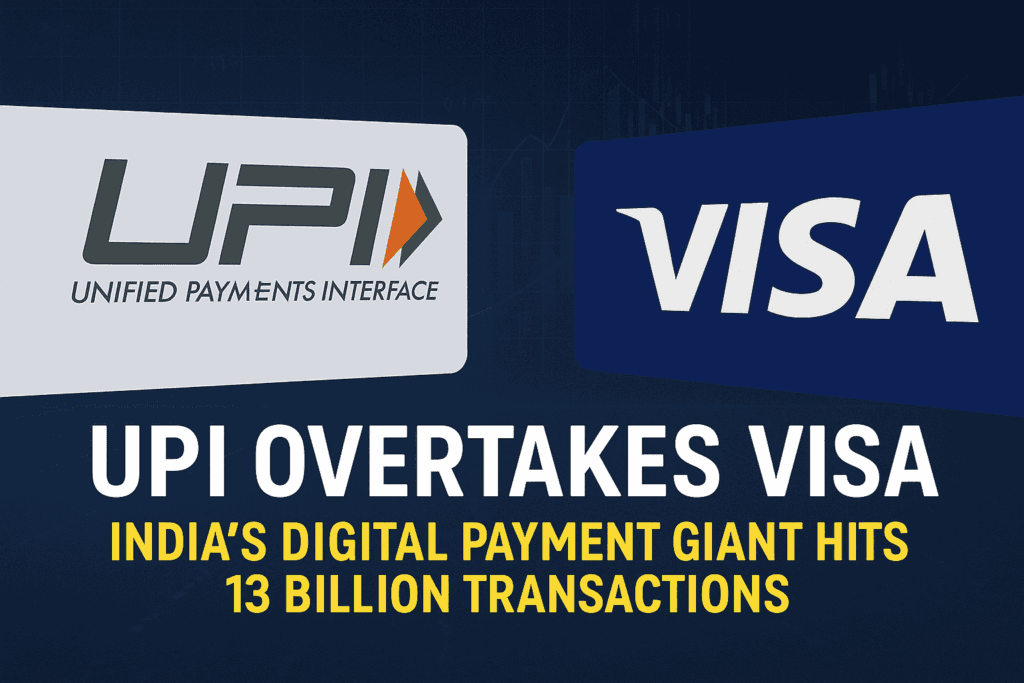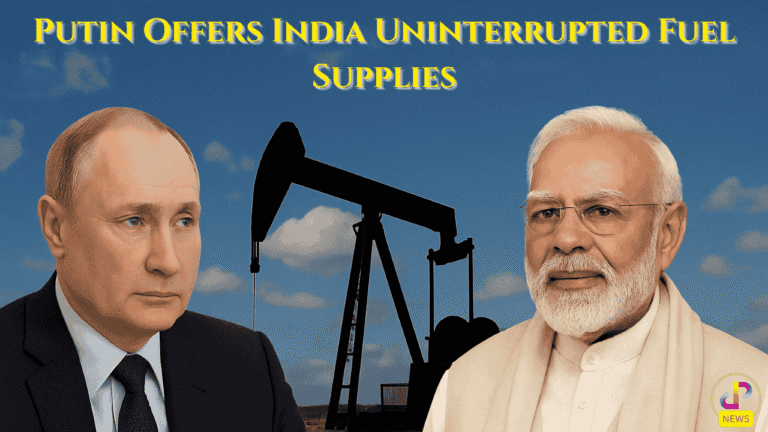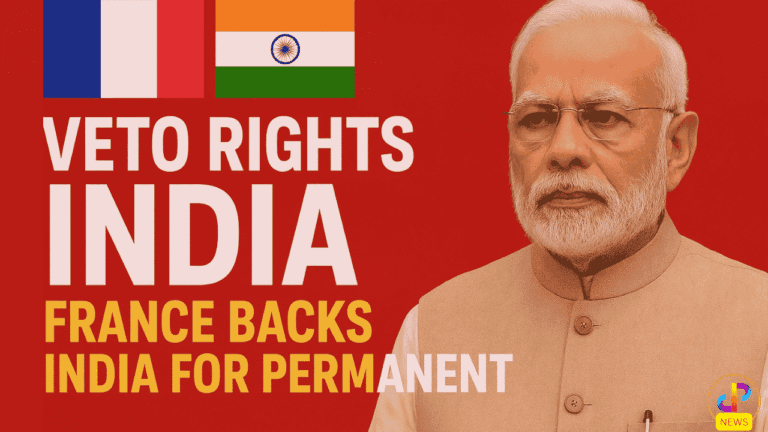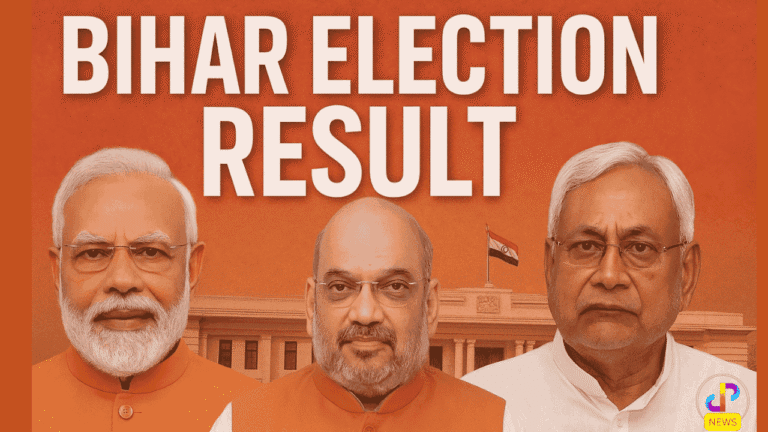UPI Overtakes Visa: 5 Reasons India’s Digital Payment System Is Leading the World in 2025
🌐 UPI Overtakes Visa – Global Digital Shift Redefined:
In a historic leap for India’s fintech ecosystem, the Unified Payments Interface (UPI) has officially overtaken Visa to become the world’s largest real-time payment system. As of July 2025, UPI now processes over 640 million transactions daily, surpassing Visa’s 639 million — a game-changing moment highlighted in the IMF’s fintech report titled “Growing Retail Digital Payments: The Value of Interoperability.”

This surge marks more than a numerical victory. It represents India’s bold transition into a cashless, inclusive economy, driven by innovation, scale, and visionary policy-making under Prime Minister Narendra Modi’s digital-first governance. 🔔 With UPI overtaking Visa, India’s Digital Rise isn’t just a trend—it’s a transformation.
📊 Transaction Triumph: UPI by the Numbers (June 2025)
The IMF-backed data tells a compelling story:
18.39 billion UPI transactions in June 2025
₹24.03 lakh crore in transaction value
32% YoY growth from June 2024
85% share of all digital payments in India
48.5% share of global real-time digital payments
Even May 2025 recorded 18.68 billion transactions worth over ₹25.14 lakh crore, pushing monthly averages to 16.99 billion in FY2025—a quantum leap for any global payments network.
🛍️ Retail Revolution: Merchants, Consumers & Micropayments
UPI’s strength lies in its wide-scale retail integration:
63% of transactions are person-to-merchant (P2M)
58% of payments fall between ₹0–₹500, indicating deep reach
Average ticket size hovers around ₹2,000, even for P2M
Whether it’s a local tea vendor in Varanasi or a shopping mall in Mumbai, UPI has made QR codes and mobile numbers more potent than plastic cards.
Leading apps like PhonePe, Google Pay, and Paytm dominate the ecosystem:
PhonePe: 8.54 billion txns | ₹11.99 lakh crore
Google Pay: 6.54 billion txns | ₹8.41 lakh crore
🌍 Global Reach: UPI’s International Footprint Expands
India is not just digitizing its borders—it’s exporting them:
UPI is now live in 7 countries, including:
🇦🇪 UAE | 🇸🇬 Singapore | 🇧🇹 Bhutan | 🇳🇵 Nepal | 🇱🇰 Sri Lanka | 🇫🇷 France | 🇲🇺 Mauritius
Cross-border UPI transactions are transforming the way Indians abroad send money home and shop globally. The BRICS nations and global regulators like FATF are in talks to scale UPI further.
This expansion is strategically aligned with India’s foreign policy push, marrying financial diplomacy with digital empowerment.
🧠 Why UPI Overtakes Visa: The Interoperability Edge
Unlike legacy card systems, UPI doesn’t depend on swipes or private gateways. Its open infrastructure allows instant payments between any two banks via any app.
No card numbers. No CVV. No friction.
Just real-time, secure, mobile-first payments — from a chaiwala to a global merchant. As UPI overtakes Visa in global transaction volume, it highlights India’s fintech dominance.
Built by NPCI, UPI currently connects:
✔️ 491 million users
✔️ 65 million merchants
✔️ 675 banks
🔥 UPI & PM Modi: A Digital Vision Turned Reality
This milestone isn’t accidental. It is the result of a decade-long digital revolution initiated and meticulously scaled by Prime Minister Narendra Modi.
From the Digital India campaign to Jan Dhan–Aadhaar–Mobile (JAM) trinity, Modi’s government has created a robust framework that bridged banking gaps, democratized internet access, and made digital finance a household reality.
“When the world still debated digital currency, India created a digital economy for the masses.”
— PM Modi, 2025 Global Fintech Summit
The unstoppable drive of PM Modi’s digital vision—backed by policy innovation, infrastructure investment, and global cooperation—has catapulted UPI beyond borders. Now, as UPI overtakes Visa, it officially enters the history books as the leading force in global digital payments.
🌟 Final Thoughts – UPI Overtakes Visa, and the World Watches:
India’s homegrown UPI has not only overtaken Visa in daily transactions, but it has redefined what’s possible in digital finance. It’s affordable, scalable, interoperable, and inclusive—a model the world is now watching and emulating.
With ongoing global partnerships, regulatory advancements, and government support, UPI is poised to become the world’s default digital payment backbone.
💡 India didn’t just build a payment system—it built a movement.
📢 Stay Informed with Digital Preeyam News – Global Trends, Indian Impact:
🌍 At Digital Preeyam News, we connect global headlines with India’s emerging leadership:
✅ Fintech & digital policy breakthroughs
✅ International partnerships & tech diplomacy
✅ Real-time updates on defense, economy & innovation
📩 Subscribe today and never miss how India is shaping the world—digitally, diplomatically, and decisively.
Social Media Profile:
Top Questions Answered: How UPI Overtook Visa in Global Digital Payments
1. What does it mean that UPI overtakes Visa?
Answer- It means India’s Unified Payments Interface (UPI) has now processed more digital transactions globally than Visa, making it the world’s leading payment system by volume.
2. How many users are currently using UPI?
Answer- As of 2025, UPI has over 491 million active users across India and abroad.
3. Why is UPI more popular than traditional card networks like Visa?
Answer- UPI is more convenient, real-time, and mobile-friendly. It eliminates the need for card details, making transactions seamless and secure.
4. Who developed UPI in India?
Answer- UPI was developed by the National Payments Corporation of India (NPCI) to enable instant bank-to-bank payments through mobile apps.
5. How many merchants accept UPI payments?
Answer- Over 65 million merchants in India currently accept UPI payments—from local vendors to large businesses.
6. How has Prime Minister Modi contributed to UPI’s global success?
Answer- PM Modi’s Digital India campaign, along with initiatives like JAM Trinity and policy support, laid the foundation for UPI’s growth and global outreach.
7. What are the global implications of UPI overtaking Visa?
Answer- This shift signals India’s leadership in fintech innovation and digital infrastructure, setting a benchmark for emerging economies worldwide.

















